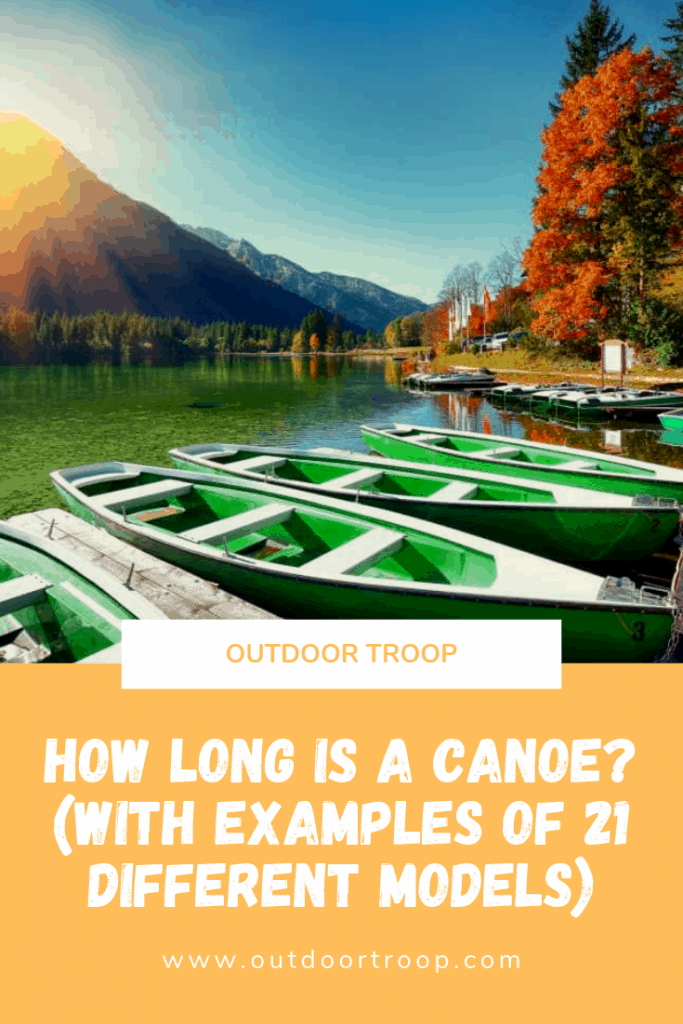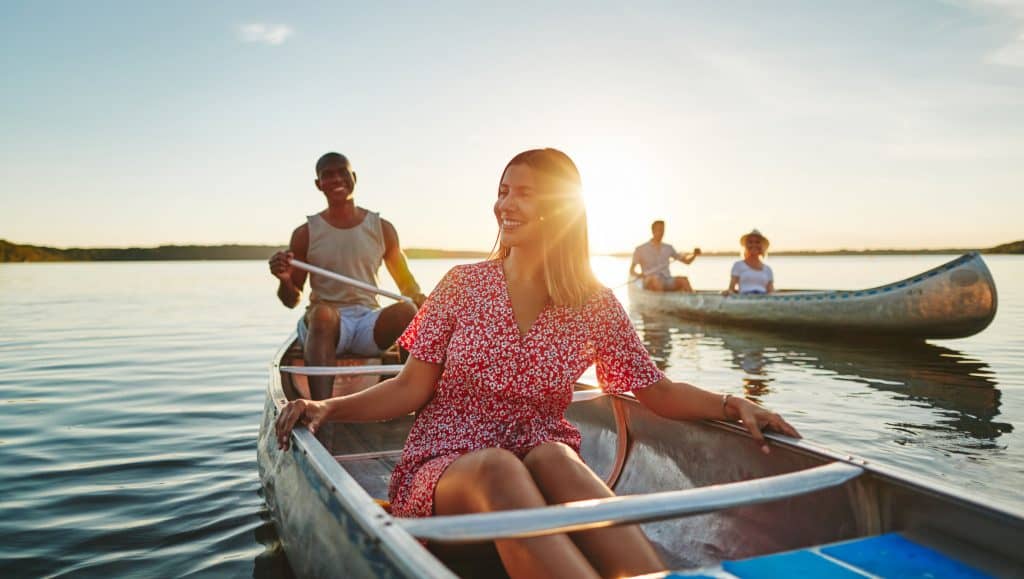
Choosing the right canoe for you, your family, or your activities is a tough decision to make. It’s best to know what works best for your purpose before purchasing. I did a lot of research on what length would work for me before purchasing my first canoe and it paid off.
On average, a canoe is about 17 feet or 5.2 meters. They can also come in short lengths (anything under 14 feet), medium (Between 14.5-17 feet), and long (anything longer than 17.5 feet).
Canoe length is not the only decision that canoers have to make. There are hundreds upon hundreds of canoe brands claiming to be the best. While each brand is different and unique, choosing the right one is essential.
The Average Length of a Canoe
The most popular canoes out there average out to have a length of 17 feet. Canoes that are this length are usually ones that are for casual canoers.
17-feet is considered to be long for a canoe as well, even though they are the most common.
When we talk about length when it comes to canoes, we are talking about the total measurement from end-to-end. With a canoe that is 17 feet in length, there is usually a great balance between carrying capacity and the ease of paddling.
If you look at our list of 21 examples, you will find that the most popular canoes are around the 16 – 17-foot length. However, there are really some short models that are frequently bought as well.
The length really depends on the purpose. Some serious canoers or fishers prefer smaller canoes while tourists and families usually choose the longer 17 ft boats.
Longer Canoes
16 to 17-foot canoes are extremely popular and for good reason. Long canoes offer greater speed, they are easier to manage, and they have a greater carrying capacity than shorter canoes. They offer more space for gear and camping equipment.
When you have a longer canoe, it can be harder to paddle, at least initially. If a canoe is shorter, it has a lower carrying and weight capacity.
3 passengers can be in one canoe and get around just fine.
Long canoes, once up to speed, are faster and easier to paddle when traveling long distances. Additionally, long canoes are usually preferred when touring because they are more comfortable.
Long canoes should be used when touring or for recreational use. A long canoe is also used in racing and playboating. They are better on flat water, like large lakes.
They are great for families because 3 passengers can fit just fine in one boat.
However, longer canoes aren’t all that easy to maneuver and they take up more space in your storage area. They also aren’t very nimble and they are much heavier than short canoes made from the same material.
It’s a good thing that you have 3 people to carry it or it would be very hard to transport, right?
Longer canoes are usually not able to fit down the more narrow streams and inlets. This can be a bummer after taking your very expensive canoe out for the first time. Long canoes are also easily affected by wind and currents.
Canoes Longer than 17 Feet
While the most typically bought 17ft long canoes are considered to be pretty long, there are some extra-long canoes on the market. These canoes are typically for families or those who like to take a lot of people out on the lake.
Northstar, Clipper, and Wenonah are just some of the brands out there that make 20 foot long canoes.
These canoes will typically fit more than 3 people and have a lot of room for storage. Their weight capacity is usually higher as well.
Long canoes like these can range from $700 – $3,000. Longer canoes will typically cost more anyway because they are not as popular and require more material when being manufactured.
If you have a bigger family, you might want to consider a canoe that is large enough for all passengers.
Just so you know ahead of time, all of the problems that come with the long canoes will be amplified with when 3 extra feet are added. You’ll have a heavy canoe that doesn’t turn well. You will also likely have difficulty getting to speed.
Storage will be a pain, too.
You might want to go with a raft if you want a boat big enough for the whole gang.
If those things are manageable for you though, check out some of these longer models:
- NorthStar Northwind 20 – 20 ft and holds 4 to 5.
- Clipper Canoes 20′ Mackenzie – 20 ft and 3 – 4 adults.
- Canots Nor-West Athabaska Special 18 – 18 ft and holds 5 people.
These are all high quality and are built to last. Getting a longer canoe may be just what you are looking for, so don’t let simple things deter you.
THE Longest Canoes
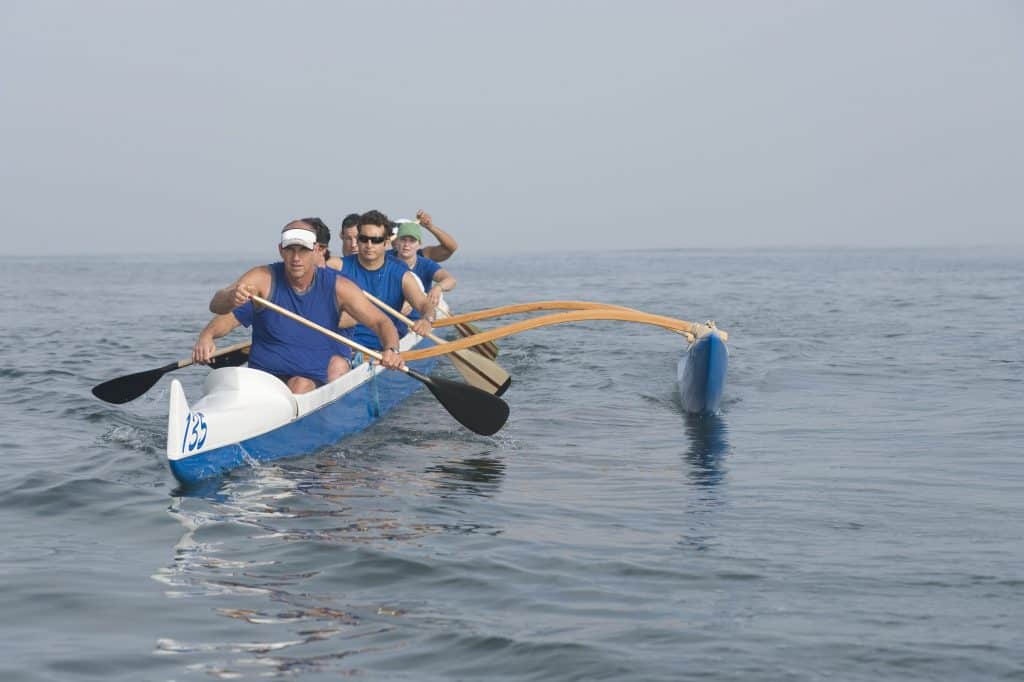
The longest canoes made are outrigger canoes. These are usually 20 to 30 ft long and over 7 feet wide! They can fit up to 7 people inside! Which makes them perfect for races.
Outrigger canoes have a long history but as for their use in modern day, Hawaii and Seattle often offer outrigger races. People come from Australia, Hawaii, Japan, New Zealand, Dubai, Polynesia, and Tahiti to take part in these races.
Long canoes offer a wide range of abilities and are best used for groups and families, while short canoes offer the greater ability for playboating and rafting. Make sure that you get the length you need when buying a canoe for your own reasons. Having the right size canoe makes canoeing easier and more fun!
If you would like to learn more about Outriggers, you can read our article on them right here on Outdoor Troop.
Shorter Canoes Are Out There
Short canoes are considered to be anything less than 14 feet in length.
Short canoes are better for fishing and white water rafting. Also, short canoes are easy to move and they weigh from 20 pounds to 50 pounds, versus long canoes weighing anywhere from 55 pounds to 200 pounds.
These shorter canoes are more responsive to turning strokes and are easier to manage in rough water. Shorter canoes can brace wind and currents better than longer canoes because they offer more stability. Short canoes are better for white water rafting, expedition trips and are better on rivers and streams.
So, if you are planning to use your canoe for more adventurous trips rather than leisurely ones, a canoe that is 14 ft or under could be the way to go.
However, short canoes can be a lot slower than long canoes. This is because there is not as much glide to them. Of course, speed does depend on the canoer as well, but generally, it is much harder to gain speed in a short canoe.
If you are in rapids, you won’t be paddling much for speed anyway.
Sevylor has a tiny 9.9 ft inflatable canoe. This is the smallest canoe you can get. If you are looking for a tiny hard-sided canoe, you’ll be looking for the awesome Wenonah “Wee Lassie” (what a perfect name!) that is 10 ft 6 inches and only 16 lbs. You can read more about the Wee Lassie in this article on Gear Junkie.
Small canoes really do have their benefits!
Here are a couple of really great short canoes for you if you are a thrill seeker:
- Sevylor Ogden – 10 feet in length and can hold 2 passengers
- Lifetime Kodiak – 13 feet long, carrying capacity of 3
- Old Town Discovery 119 – 11ft in length and meant for just one person
Don’t let the average canoes scare you off from what you really want.
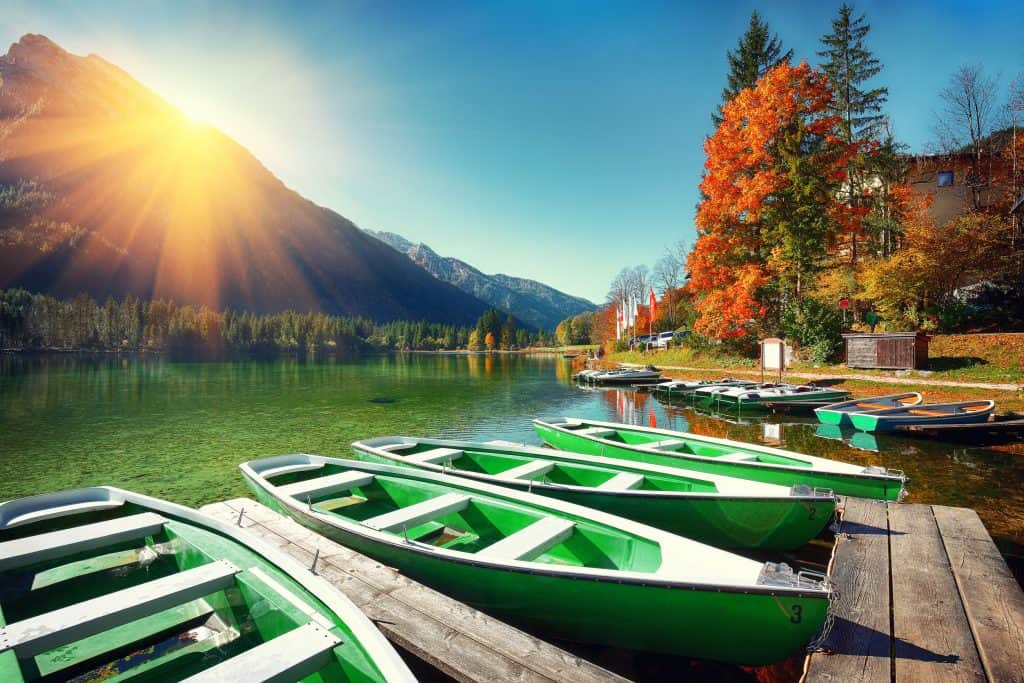
21 Canoe Length Examples
Even if the average length of a canoe is 17 feet, it’s best to see the large variety of lengths that are really out there. You can explore your options better this way.
The models that were selected for our examples are based on the most popular canoes out there.
| Brand: | Length: | Weight: | Carrying Capacity: | Price($) |
| Old Town 133 Recreational | 14.6ft | 95lbs | 3 | $1,000 |
| Sevylor Ogden | 10ft | 42.3lbs | 2 | $260 |
| Old Town Discovery 119 | 11ft | 49lbs | 1 | $700 |
| MyCanoe Origami | 14 ft | 52lbs | 3 | $1,590 |
| Sun Dolphin Mackinaw | 15.6ft | 100lbs | 3 | $590 |
| Old Town Sport 15 | 15.3ft | 118lbs | 4 | $1,700 |
| Grumman Solo | 12.75ft | 44lbs | 2 | $160 |
| Old Town Discovery Sport | 16ft | 125lbs | 4 | $1,695 |
| MadRiver Adventure 16 | 16ft | 84lbs | 3 | $869 |
| MadRiver Adventure 14 | 14ft | 75lbs | 3 | $655 |
| Grumman Double Ender | 17ft | 85lbs | 3 | $2,165 |
| Sun Dolphin Scout | 14ft | 95lbs | 3 | $550 |
| Old Town Guide 147 | 15ft | 82lbs | 2 | $850 |
| Wenonah Spirit II | 17ft | 73lbs | 3 | $2,100 |
| MadRiver Passage 14 | 14ft | 75lbs | 3 | $655 |
| Grumman 16 Square Stern | 16ft | 63lbs | 3 | $2,250 |
| Lifetime Kodiak | 13ft | 96lbs | 3 | $795 |
| Heron Squif | 14.6ft | 69lbs | 3 | $2,115 |
| Old Town Penobscot 174 | 17ft | 83lbs | 3 | $1,300 |
| Wenonah Kingfisher | 16ft | 39lbs | 3 | $2,175 |
| Sevylor Rio | 9.9ft | 35lbs | 1 | $380 |
| Mad River Freedom | 14.6ft | 55lbs | 2 | $1550 |
How Length Impacts Other Aspects of the Canoe
Length is one very important aspect to consider when picking out a canoe, but it’s crucial to know that it’s not the only thing to look at. Carrying capacity and weight capacity are part of size as well.
You might want to look at prices as well.
Even though these things are separate from length, length figures into all three.
Carrying capacity often increases as the length does. The same can be said in regards to weight capacity and price, most of the time.
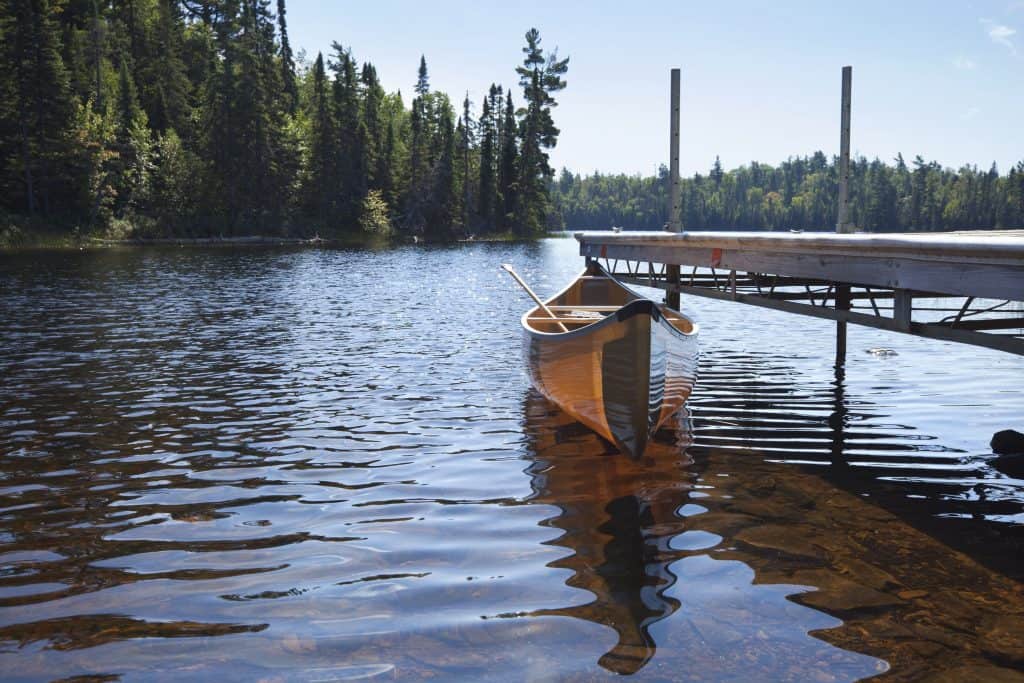
Carrying Capacity
Carrying capacity refers to the number of people that can fit inside the canoe. Usually, canoes have seats which implicate this capacity but some canoes have space in the middle that could register as a seat for someone else.
On average, canoes can usually carry 3 people. There are normally two designated seats and room in the middle for a third. However, the longer the length of the canoe the more people you can take with you on your canoeing adventures.
So, if you want a canoe that fits more people, it’s better to go with choosing a longer canoe.
You’ll have to consider if you are taking 3 adults with you or 2 adults and a child. Some canoes have a carrying capacity of 3 people but you’ll have to double check the weight capacity to be safe.
Weight Capacity
Weight capacity is how much the canoe can hold while traveling. Short canoes often have a very low weight capacity because they are unable to hold a lot of gear, people, or supplies.
Because longer canoes are, well…longer, they are not only able to hold more supplies and equipment but they can hold more people, which is what makes them great for families and groups of people.
If you have three 6-foot 5 guys coming aboard the canoe plus gear, you might be over the weight capacity, despite what the carrying capacity says.
How to Calculate the Weight Capacity Using Length and Width
If you are unsure of how much weight your canoe can hold there is an easy solution. Two things you need to know when calculating the capacity of your canoe is the length and the width. Canoes usually come in three different widths.
Narrow – Narrow widths are usually 33 inches or less. Narrow width is great for speed and efficient paddling, but they do have low stability initially.
Medium – Medium width is usually 34 to 37 inches. They offer a good blend of speed, stability, and capacity but they are still not as stable as they could be and they can impact speed.
Wide – Wide width canoes are anything over 38 inches. They have great stability and they offer a more stable platform, however, they can make it harder to reach the water, they impact speed, and they make it difficult to paddle solo.
Once aware of the length and width of the canoe you follow a formula to find the carrying capacity.
Length x Width / 15
This gives you the carrying capacity. Once you have the capacity you can multiply that number by 150, which is the average weight of one person. This will roughly give the weight capacity for the canoe.
So for example, if there is a canoe that is 16.5 feet long and 2.9 feet (35 inches) wide, if plugged into the formula, the carrying capacity can be found. Sidenote: Make sure to always convert the width to feet first.
16.5 x 2.9 / 15= 3.2
3.2 x 150= 480
This specific canoe can hold up to 480 pounds!
Prices
As with carrying capacity and weight capacity, the longer the canoe signifies the more you can have. This also relates to price.
Longer canoes use more materials to make, can hold more, and have to be more durable to hold their weight, so naturally, they will be more pricey.
There are many factors that contribute to canoe prices, things like material, aesthetics, control-ability, stability, speed, and construction.
However, longer canoes offer more than short canoes and therefore offer more options with all these factors. Long canoes are usually found in the $800 and up price range.
High quality canoes can be priced in the $1,000’s, even if it is a short canoe.
If you do want a smaller canoe, you might be able to find one at a pretty cheap price. But smaller doesn’t necessarily mean you will spend less money.
One thing to keep in mind is to get the right length for you. Now that you know the differences between length and the benefits of each, you can make a well-informed decision on your next canoe.

